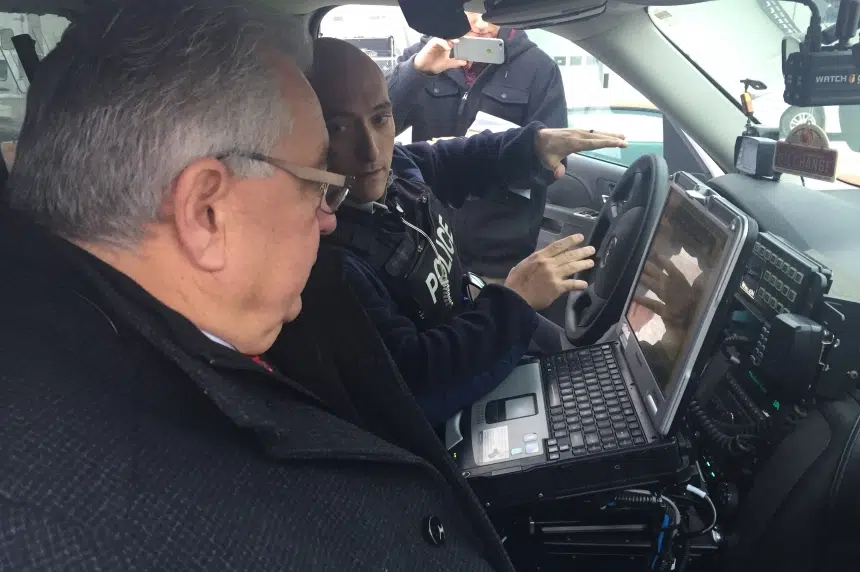In an average day, RCMP Sgt. Al Hofland estimates a police officer can scan 80 license plates a day.
An automated license plate reader (ALPR) can scan 120 license plates – an hour.
SGI invested $800,000 into 32 ALPRs in October. This week, 15 are being installed into police vehicles. The rest will be installed by the end of January 2017.
To date, SGI has funded 47 ALPRs in Saskatchewan.
Joe Hargrave, minister responsible for SGI, said he hopes the technology will help police once new impaired driving and distracted driving laws come into effect.
“This will help them find those high risk drivers and get them off the road.”
The machines use infra-red technology to scan license plates and alert police to when the plate is linked to a stolen or unregistered vehicle, a suspended driver or someone wanted by police.
“Some of the officers were just mentioning here this morning how they just drove down one street and bang – there was like four (caught),” Hargrave told reporters from an auto body shop where the ALPRs were being installed.
In addition to helping with new impaired and distracted driving laws, Hargrave pointed out the tool will also help during Amber alerts.
“It comes on their system right now, they can identify that vehicle, that license plate, and you know, hopefully help maybe save somebody’s life.”
Big help to police
While the goal of ALPRs is to make the roads safer, Sgt. Al Hofland said it’ll also make things quicker and safer for the police officer behind the wheel.
“The automated feature is a bonus for us in terms of not having to be distracted from paying attention to everything that’s going by us,” Hofland said.
“We all know what happens with distracted driving and we’ve that seen ourselves.”
Currently, all the ALPRs will be installed in polices car within the province’s Combined Traffic Service pilot, which is made up of RCMP, municipal police and SGI to target problematic roads and intersections in central and southeast Saskatchewan.
Minister Hargrave hopes to see ALPRs expanded to more police vehicles in the province, but said they are expensive, with $800,000 only buying 32. He also mentioned they are difficult to install.
“We will be funding more through SGI in the future, but right now we wanted to get those additional ones out there to help with the impaired drivers. We’re very optimistic we’ll be able to provide more to other police services in the very near future.”







